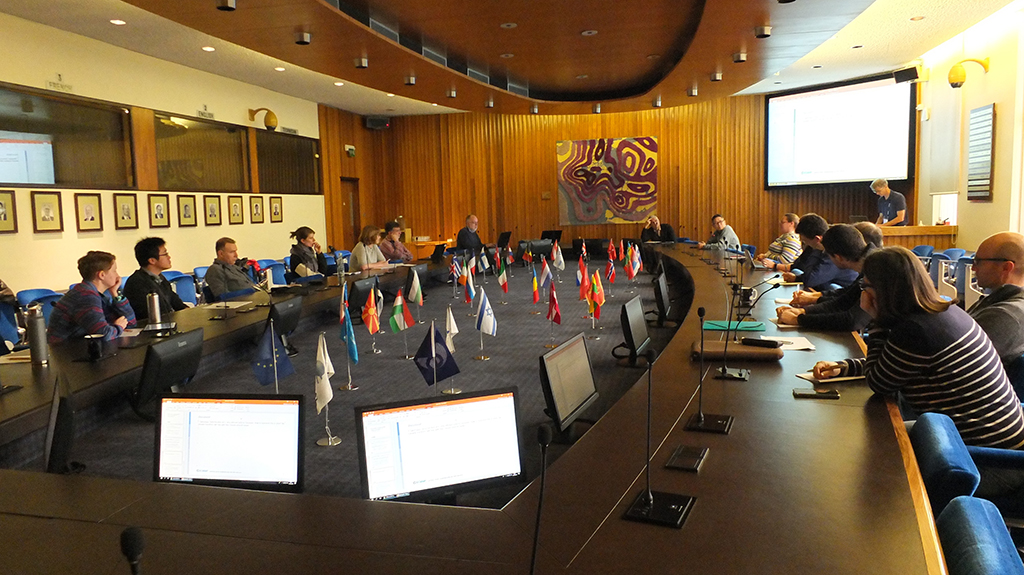Eighty of the world’s leading experts on using satellite cloud and precipitation observations in numerical weather prediction (NWP) came together at ECMWF from 3 to 6 February 2020. Observations of cloud and precipitation are key to improving global, regional and convective-scale weather forecasts, as they provide information in active weather situations. Through sophisticated assimilation algorithms, these observations provide information not only on clouds or precipitation but also on the dynamics that support cloud or precipitation developments. Aside from improving initial conditions, experience from assimilating these observations also enables feedback on cloud modelling developments, identifying strengths and shortcomings and guiding future developments. At the same time, using cloud and precipitation- affected observations is challenging, due to the complexity of forward modelling the observations as well as the complexity of representing the errors and uncertainties involved. The February meeting was the fourth in a series of workshops on ‘Assimilating Cloud and Precipitation Observations for NWP’. Organised every five years, these workshops provide a very fruitful forum for a highly active research area. Reflecting the collaborative nature of the effort, this time the event was organised jointly with EUMETSAT’s NWP Satellite Application Facility (SAF) and the US Joint Center for Satellite Data Assimilation (JCSDA).
A particular feature of the workshop was bringing together different communities, from cloud physics modelling, observations, observation forward modelling and data assimilation. Successful assimilation of cloud and precipitation observations relies on developments in all these areas, but usually the communities involved meet in separate conferences or workshops.

The interdisciplinary nature of the workshop was much appreciated by the participants. Twenty-six speakers presented recent achievements and remaining challenges, and panel discussions, poster sessions, and working group meetings rounded off a highly interactive programme.
The participants came from a wide range of NWP centres, covering global to convective-scale applications, as well as from academia, space agencies and private data providers.
Progress made
Several talks highlighted the immense progress that has been made since the last workshop. At that time, ECMWF was the only centre assimilating cloud- and precipitation- affected microwave observations operationally, whereas now several centres have achieved similar operational implementations, with significant impacts on forecast skill. Among the consistent benefits shown were improvements for tropical cyclone forecasting resulting from all-sky assimilation of these observations. Developments for infrared observations are also approaching operational maturity, and experimental assimilation of observations in the visible part of the spectrum or from active sensors shows promise. The assimilation of closely linked lightning observations is also becoming feasible.
Continuing challenges
At the same time, it is clear that a large portion of available cloud and precipitation observations are still not yet operationally exploited in NWP, and significant challenges remain to bring promising developments to operational maturity. This includes continued development and refinement of fast and accurate observation operators, cloud modelling and assimilation strategies. A particular aspect is the interaction of different scales, as clouds depend on scales from the synoptic down to microphysical processes.
The workshop highlighted the need to adequately treat these different scales and the uncertainties in them, in order to optimise the impact of the observations on different forecast ranges. Together with the non-linear nature of the forward modelling, these aspects continue to challenge existing data assimilation methodologies. It was suggested that cloud and precipitation assimilation may profit particularly from hybrid approaches that combine the strengths of different methods (e.g. 4D-Var and ensemble approaches, including particle filters, etc.).
Beyond using the observations to gain benefits from better initial conditions, the workshop also highlighted how feedbacks on cloud modelling developments are gaining traction. With an increasing diversity of observations used, it may be possible to achieve ‘microphysical closure’, where the sources of cloud and precipitation- related errors in forecast models can be identified by exploiting the overlapping sensitivities of different observation types. Constructive inter-community collaboration will remain crucial to achieve further benefits in these areas.
Presentations, posters, and recordings are available on the workshop web page at https://www.ecmwf.int/en/learning/workshops/4th-workshop-assimilating-satellite-cloud-and-precipitation-observations-nwp.
